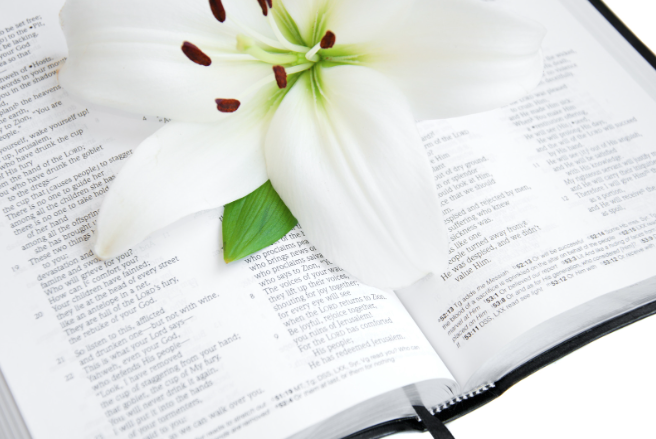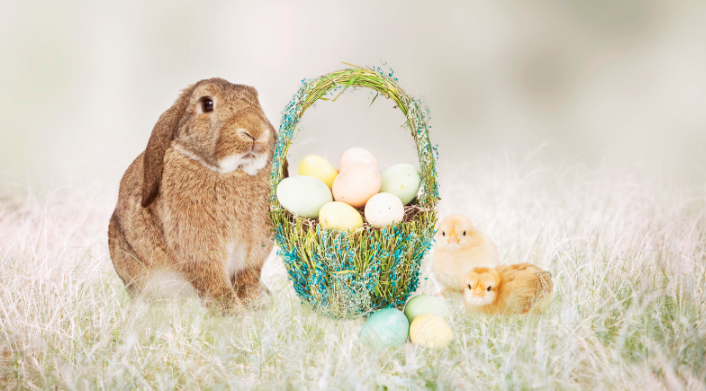
Easter traditions and symbols have undergone changes over time, while others have remained for centuries. Although the resurrection of Christ is what Christians celebrate on Easter, many traditions associated with the holiday are not mentioned in the Bible. The Easter bunny, the most popular secular symbol of the holiday, was brought to America by German immigrants who shared tales of an egg-laying hare. Decorating eggs has been a tradition since the 13th century whereas the Easter parade dates back even further. The consumption of Easter candy is a modern addition to the celebration of this early spring holiday, among other contemporary practices.
The Origin of the Easter Bunny
The Bible does not reference a long-eared, short-tailed creature that delivers decorated eggs to children on Easter Sunday. Despite this, the Easter bunny has become an iconic symbol of Christianity’s most significant holiday. While the exact origins of this mythical mammal are unknown, rabbits have long been associated with fertility and new beginnings due to their reputation as prolific procreators.
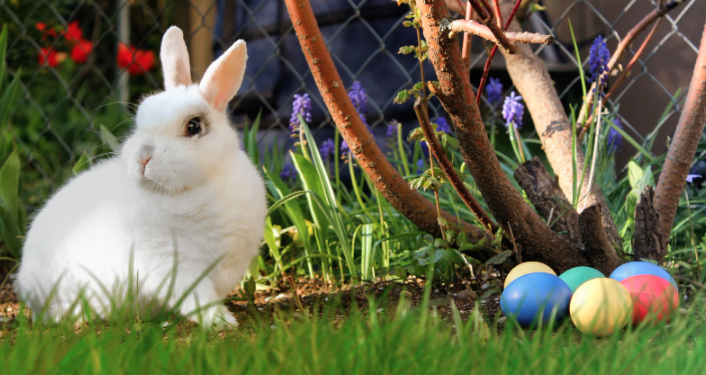
The Easter Bunny made its way to America in the 1700s with German immigrants who brought with them their tradition of an egg-laying hare called “Osterhase” or “Oschter Haws.” The children of these families created nests for the creature to lay its colored eggs. Over time, this custom became popular throughout the U.S., and the Easter Bunny’s gift-giving expanded to include chocolate, candy, and other presents in decorated baskets instead of nests. To top it off, children would leave carrots for the bunny in case he got hungry from all his hopping.
Fun Fact: The biggest Easter egg ever created weighed over 8,000 pounds and was over 25 feet tall. Made of chocolate and marshmallow and reinforced with an internal steel frame, it certainly was an impressive feat.
The Origins and Significance of Easter Eggs
While Easter is a religious holiday, some of its most beloved customs, such as Easter eggs, likely have pagan roots. The egg, which has long been a symbol of new life, was associated with spring festivals in pagan cultures. From a Christian perspective, Easter eggs signify the emergence of Jesus from the tomb and his resurrection. The tradition of decorating eggs for Easter dates back to at least the 13th century, as per some sources. One theory posits that eggs were once prohibited during the Lenten period, so people would decorate them instead to mark the end of fasting and penance, then eat them on Easter as a celebration.

Easter: America's Second Best-Selling Candy Holiday
Easter is the second most popular candy holiday in America, second only to Halloween. Chocolate eggs, a favorite sweet treat associated with the holiday, date back to early 19th century Europe. Eggs have long been associated with Easter as a symbol of new life and Jesus’ resurrection. Another popular egg-shaped candy, the jellybean, became linked with Easter in the 1930s, although its origins date back to a Biblical era sweet called a Turkish Delight.
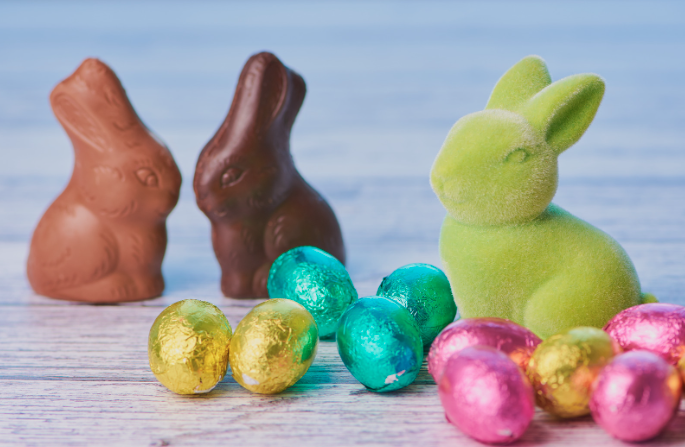
According to the National Confectioners Association, over 16 billion jellybeans are produced in the U.S. each year for Easter. That’s enough to fill an enormous egg measuring 89 feet high and 60 feet wide! For the past decade, the top-selling non-chocolate Easter candy has been the marshmallow Peep, a colorful, sugar-coated confection. Bethlehem-based candy manufacturer Just Born, founded by Russian immigrant Sam Born in 1923, started selling Peeps in the 1950s. The original Peeps were yellow, marshmallow-flavored chicks, but other shapes and flavors were introduced later, including chocolate mousse bunnies.
The History and Tradition of the Easter Parade in New York City
Since the mid-1800s, the Easter Parade has been a beloved tradition in New York City. Initially, it was an event for the upper crust to show off their fashionable new spring outfits and hats, but it soon attracted the attention of the public. The tradition grew to its peak in the mid-20th century and was immortalized in the 1948 movie “Easter Parade,” starring Fred Astaire and Judy Garland, with music by Irving Berlin.
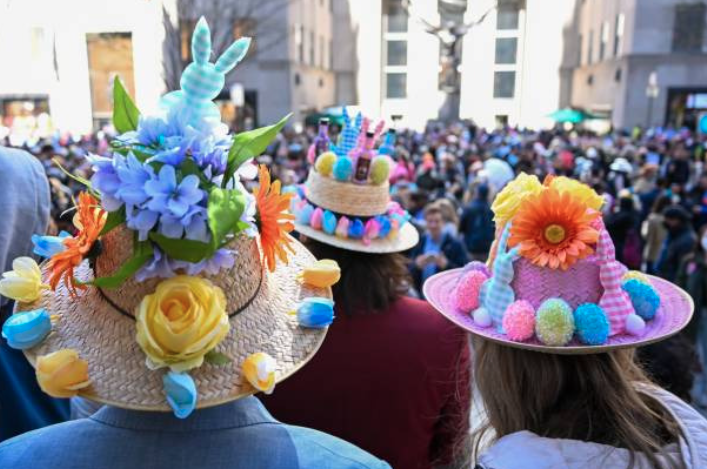
Today, the Easter Parade continues in Manhattan, with Fifth Avenue from 49th to 57th Street being blocked off to traffic for the day. Participants can be seen wearing elaborately decorated hats and bonnets. While the event has no religious significance, it is worth noting that processions have been a part of Christianity since its earliest days. The Easter Parade tradition has expanded beyond New York City, with other cities across America also hosting their own parades.
Lamb: A Traditional Easter Dish with Historical Roots
The consumption of lamb during Easter has a rich history. Christians often refer to Jesus as the “Lamb of God,” while the tradition of eating lamb during Easter also has ties to early Passover celebrations. According to the story of Exodus, the people of Egypt endured a series of devastating plagues, including the death of all firstborn sons. Israelites marked their doorposts with the blood of a sacrificed lamb so that God would “pass over” their homes. Even after converting to Christianity, Jews continued to eat lamb during Easter. In fact, lamb was historically one of the first fresh meats available after a long winter with no livestock to slaughter.
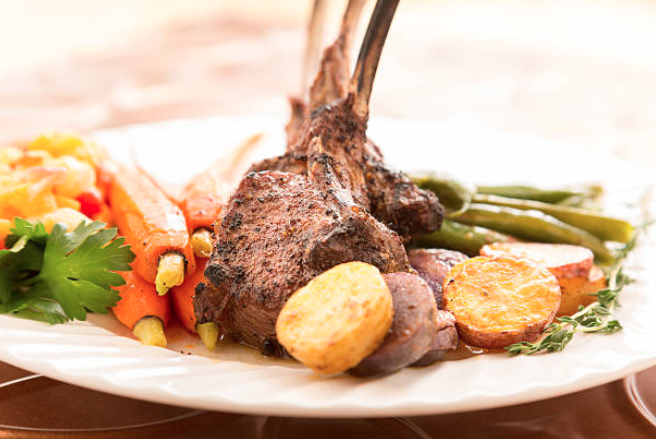
The Significance of White Easter Lilies
For Christians, white Easter Lilies serve as a representation of the purity of Christ and are frequently used to adorn churches and homes during Easter. The flower’s growth from dormant bulbs in the ground to exquisite blooms symbolizes the rebirth and hope of Christ’s resurrection. While lilies are native to Japan and were introduced to England in 1777, they only arrived in the United States following World War I. Since then, they have become the unofficial flower of Easter celebrations throughout the country.
